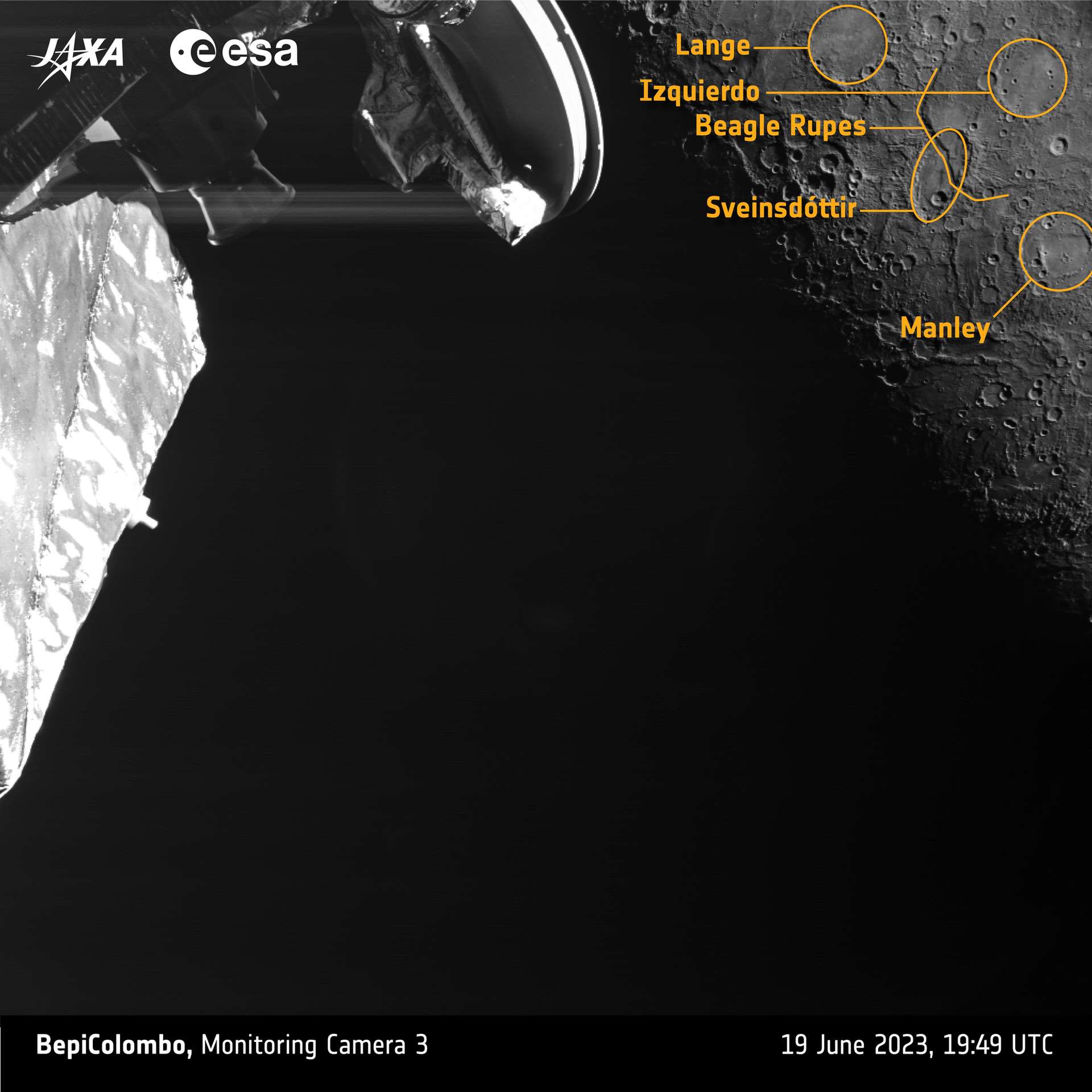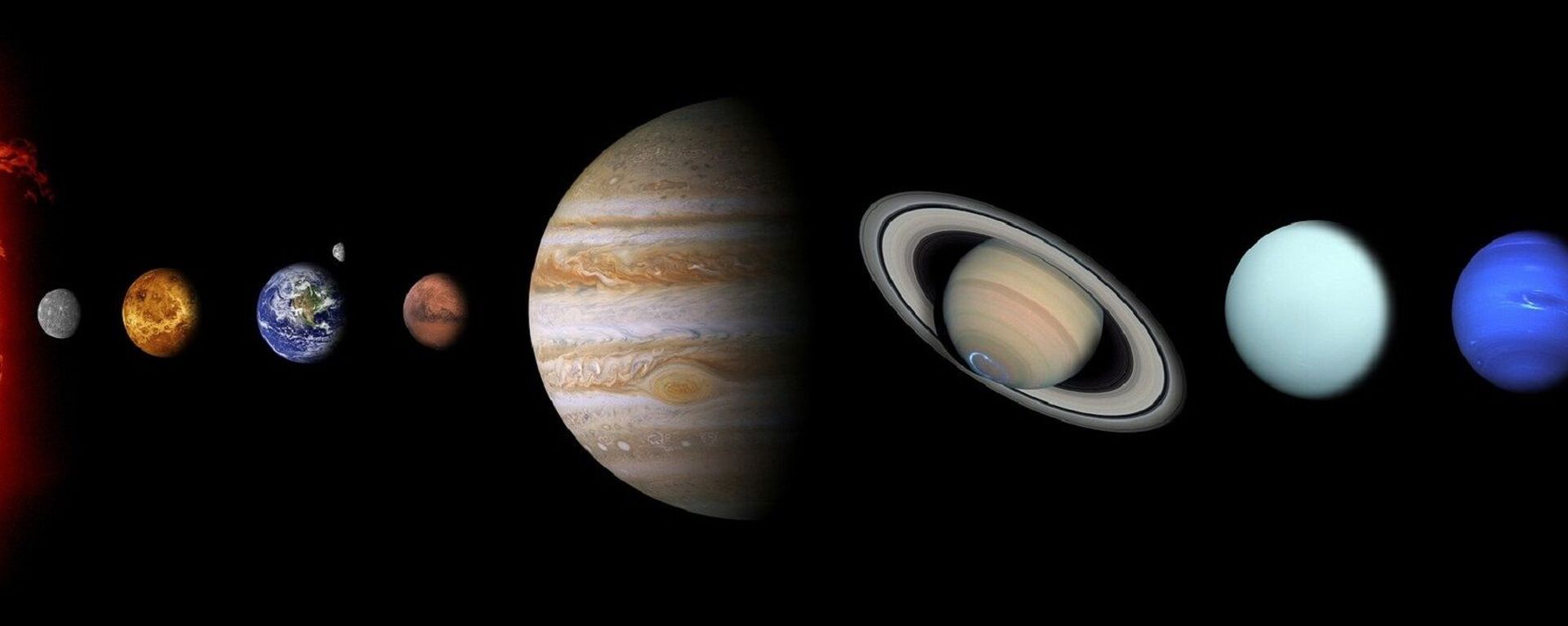https://sputnikglobe.com/20230622/mercury-unveiled-probes-close-encounter-captures-planets-stunning-hidden-treasures-1111390550.html
Mercury Unveiled: Probe's Close Encounter Captures Planet's Stunning, Hidden Treasures
Mercury Unveiled: Probe's Close Encounter Captures Planet's Stunning, Hidden Treasures
Sputnik International
A pair of satellites captured stunning images as they flew by Mercury, revealing a wealth of intriguing geological phenomena, including tectonic and volcanic oddities and an impact crater on the planet's surface.
2023-06-22T12:42+0000
2023-06-22T12:42+0000
2023-06-22T12:42+0000
beyond politics
europe
japan
european space agency (esa)
jaxa
italian national institute for astrophysics (inaf)
bepicolombo
flyby
mercury
https://cdn1.img.sputnikglobe.com/img/07e7/06/16/1111392127_0:0:2048:1153_1920x0_80_0_0_988948f38e43dc39788aa88e4109f8cc.png
Called the BepiColombo mission, the satellites are a joint effort by the European Space Agency (ESA) and Japan Aerospace Exploration Agency (JAXA) to unlock Mercury's secrets.The mission's third gravity-assisted flyby of the planet produced an impressive set of images, according to an ESA press release. There will be a total of six such flybys, with the newly released images taken from just 236 kilometers above the planet's surface.The monochromatic images unveiled by the agencies reveal a number of intriguing features, including the newly christened crater for Jamaican artist Edna Manley. This crater, which spans a colossal 218 kilometers across, has caught the attention of scientists due to the presence of "dark low-reflectance material." Researchers speculate that this intriguing substance may be remnants of Mercury's ancient carbon-rich crust, according to the press release.In addition, the basin of the crater has been submerged in smooth lava, which scientists believe is evidence of the planet's long history of volcanic activity.To further explore this intriguing site, BepiColombo will continue to monitor the crater from orbit, studying the area's carbon composition and potentially revealing valuable information about the minerals hidden within.Two other images taken closer to the planet reveal one of Mercury's most remarkable geological thrust systems. Known as a "lobate scarp," this tectonic feature is characterized by a wrinkled appearance that is thought to be the result of the planet's cooling and shrinking over time. In addition, various parts of this region have been inundated with volcanic lava.Valentina Galluzzi, a young researcher at the Italian National Institute for Astrophysics (INAF), expressed her enthusiasm:Galluzzi went on to say that the intricate interplay between these escarpments provides valuable insights into the planet's cooling process, which causes the surface crust to slide and form a series of intriguing features that will be studied in more detail once BepiColombo enters orbit.Researchers have announced that another Mercury flyby is planned for September 2024, marking another milestone in the ongoing mission.
https://sputnikglobe.com/20230511/scientists-discover-secret-tether-that-keeps-planets-from-colliding-1110250157.html
japan
Sputnik International
feedback@sputniknews.com
+74956456601
MIA „Rossiya Segodnya“
2023
Sputnik International
feedback@sputniknews.com
+74956456601
MIA „Rossiya Segodnya“
News
en_EN
Sputnik International
feedback@sputniknews.com
+74956456601
MIA „Rossiya Segodnya“
Sputnik International
feedback@sputniknews.com
+74956456601
MIA „Rossiya Segodnya“
esa, jaxa, bepicolombo mission, flyby, mercury photo
esa, jaxa, bepicolombo mission, flyby, mercury photo
Mercury Unveiled: Probe's Close Encounter Captures Planet's Stunning, Hidden Treasures
A pair of satellites captured stunning images as they flew by Mercury, revealing a wealth of intriguing geological phenomena, including tectonic and volcanic oddities and an impact crater on the planet's surface.
Called the BepiColombo mission, the satellites are a joint effort by the European Space Agency (ESA) and Japan Aerospace Exploration Agency (JAXA) to unlock Mercury's secrets.
The mission's
third gravity-assisted flyby of the planet produced an
impressive set of images, according to an ESA press release. There will be a total of six such flybys, with the newly released images taken from just 236 kilometers above the planet's surface.
The monochromatic images unveiled by the agencies reveal a number of intriguing features, including the newly christened crater for Jamaican artist Edna Manley. This crater, which spans a colossal 218 kilometers across, has caught the attention of scientists due to the presence of "dark low-reflectance material." Researchers speculate that this intriguing substance may be remnants of Mercury's ancient carbon-rich crust, according to the press release.
In addition, the basin of the crater has been submerged in smooth lava, which scientists believe is evidence of the planet's long history of volcanic activity.
To further explore this intriguing site, BepiColombo will continue
to monitor the crater from orbit, studying the area's carbon composition and potentially revealing valuable information about the minerals hidden within.
Two other images taken closer to the planet reveal one of Mercury's most remarkable geological thrust systems. Known as a "lobate scarp," this tectonic feature is characterized by a wrinkled appearance that is thought to be the result of the planet's cooling and shrinking over time. In addition, various parts of this region have been inundated with volcanic lava.
Valentina Galluzzi, a young researcher at the Italian National Institute for Astrophysics (INAF), expressed her enthusiasm:
"This is an incredible region for studying Mercury's tectonic history," she said during a public relations event unveiling the photos.
Galluzzi went on to say that the intricate interplay between these escarpments provides
valuable insights into the planet's cooling process, which causes the surface crust to slide and form a series of intriguing features that will be studied in more detail once BepiColombo enters orbit.
Researchers have announced that another Mercury flyby is planned for September 2024, marking another milestone in the ongoing mission.




